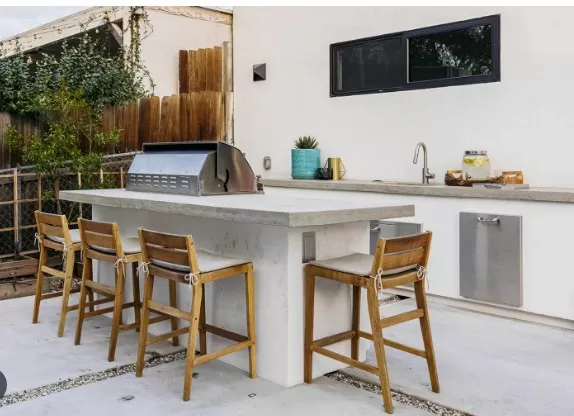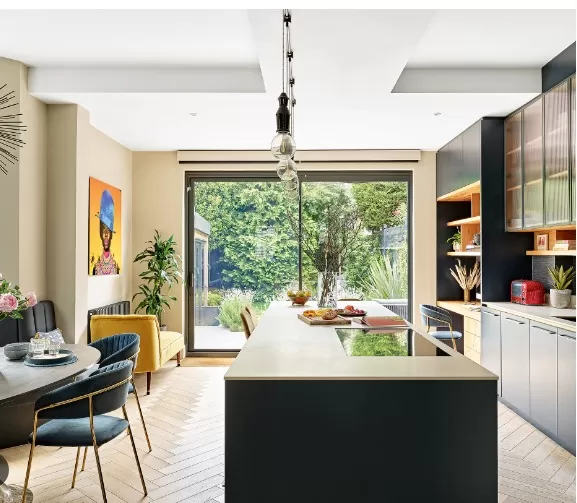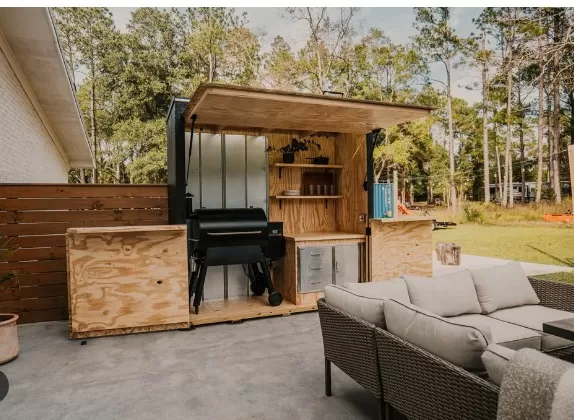Outdoor Kitchen Pro Tips: Building with Expert Advice. To construct an outdoor kitchen that is both functional and visually appealing, it is crucial to choose materials that can withstand the harsh outdoor elements. When it comes to durability, few materials can match the strength and longevity of stone and concrete.
By incorporating these materials into your outdoor kitchen design, you can create a space that not only stands up to the test of time but also exudes a professional and stylish flair. With concrete counters, you can prepare and enjoy your outdoor meals in style, not just for the current season but for many seasons to come. Please note that this content is paid advertising developed in collaboration with Quikrete. The information and viewpoints expressed here are those of BobVila.com.
Yes, You Can Build Your Own Outdoor Kitchen and Achieve a Professional Finish!

When the pleasant weather motivates you to host outdoor gatherings, having an outdoor kitchen with a sturdy structure and a professional finish can make food preparation easier and expand your dining possibilities.
While you might have believed that constructing an outdoor masonry kitchen was a task reserved for professionals, you’ll be pleasantly surprised to learn that you can DIY your own customized kitchen in just a couple of weekends. All you need is Quikrete Countertop Mix, a set of modular blocks in various sizes called RumbleStone from Pavestone, and your preferred outdoor appliances.
To get inspired and kick-start your project, we recommend watching a detailed instructional video by Quikrete on building an outdoor kitchen.
Additionally, keep these professional tips in mind to ensure a successful outcome.
Achieve Levelness from the Start
Ensuring that your outdoor kitchen has a level foundation from the beginning is crucial for the overall stability and balance of the structure.
Even the slightest deviation in the levelness of the bottom row of stones will affect the subsequent rows, throwing off the entire construction. Since most patios are designed with a slight slope to facilitate rainwater runoff, you’ll need to level the bottom course by using a mortar, such as Quikrete Sand/Topping Mix, to create a level surface for the stones.
Professional Tip: Begin by setting the corner stones in mortar, making use of a 6- or 8-foot-long level to ensure their tops are perfectly level.
Once the mortar beneath the corner stones has hardened, proceed to fill in the course with the remaining stones, checking the levelness of each one as you go to ensure they are at the appropriate height.
Maintain Vertical Alignment for Each Course

In addition to ensuring horizontal levelness, it’s important to keep the rows of stones plumb, preventing them from bowing inward or outward.
To achieve this, a straightforward method is to run a string line from the outer edge of one corner stone to the outer edge of the corner stone at the end of the same course. As you set each stone in the course, make sure it barely touches or grazes the string line.
This will help ensure that your courses remain even and aligned. Once a course is finished, raise the string line to the next course to continue the process.
Assemble Each Course Without Mortar
The Pavestones you’ll be working with are of the same height and width but come in three different lengths.
To create an aesthetically pleasing texture, you can achieve this by alternating long stones with medium and short stones. To ensure a perfect fit at corners and appliance openings, it is recommended to dry stack each course before applying mortar. This means placing the stones in their designated positions without using any adhesive or mortar. .
By dry stacking, you can determine the ideal placement for each stone, creating a cohesive pattern that fits seamlessly.
Once you have finalized the arrangement, you can begin the installation process by lifting the stones one by one. Apply Quikrete Advanced Polymer Construction Adhesive to the stones below, and then carefully set the stones back in their designated positions.
This adhesive will help secure the stones in place and provide additional stability to the structure.
Ensure Sufficient Adhesive Application

While working with Pavestones, it’s not necessary to use mixed mortar except for leveling purposes beneath the first course.
However, it’s important to have a reliable method to firmly lock the courses together, as the stones may shift or move if accidentally bumped. To address this, using a high-quality masonry adhesive is recommended, such as Advanced Polymer Construction Adhesive, which can be easily dispensed using a caulking gun.
Apply an ample amount of adhesive, approximately the size of a half-dollar, on top of each stone in the previous course.
This ensures that the stone you’re placing will be securely bonded, resulting in a structurally sound and stable wall. By properly applying the adhesive, you can prevent any potential movement or displacement of the stones, maintaining the integrity of the overall structure.
*The information is for reference only.